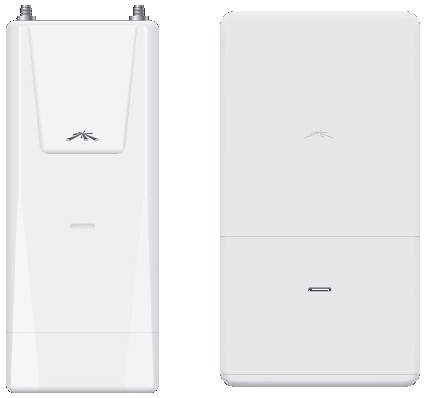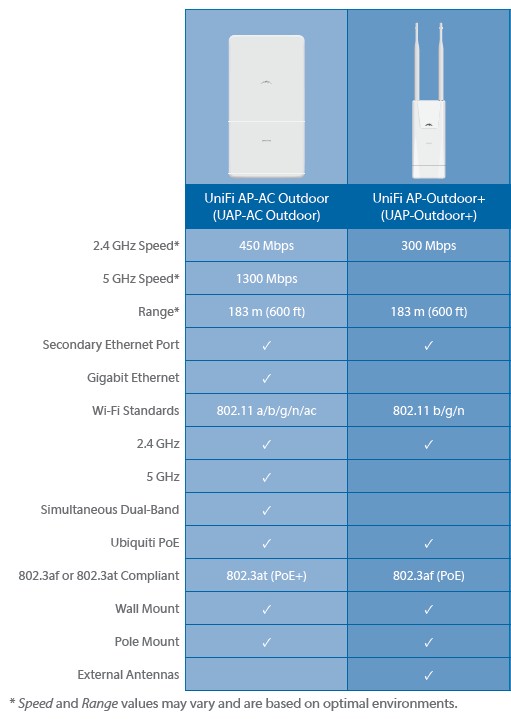 Ubiquiti has announced two additions to its UniFi outdoor access point family.
Ubiquiti has announced two additions to its UniFi outdoor access point family.
The UniFi Outdoor+ is a 2.4 GHz N300 class access point that uses "Multi-Lane RF" technology designed to deliver high throughput in noisy environments. Ubiquiti says the patent-pending technology can provide "more than double the throughput of competitive solutions" in environments with high interference.
The Outdoor+ has two 10/100 Ethernet ports and is powered via 802.3af Power over Ethernet via an included adapter. Also included are two 5 dBi omni-directional antennas that connect via top-mounted RP-SMA connectors.

Ubiquiti UniFi AP Outdoor+ and Outdoor AC
The company says the UniFi AP Outdoor AC is the first outdoor "enterprise" draft 11ac access point. It is an AC1750 class design, simultaneously supporting link rates up to 450 Mbps in 2.4 GHz and 1300 Mbps in 5 GHz when used with 3×3 draft 11ac clients.
It has two Gigabit Ethernet ports, six internal antennas and is powered by 802.3at PoE (adapter included).

Ubiquiti UniFi AP Outdoor+ and Outdoor AC spec summary
Both APs are managed by Ubiquiti’s free UniFi controller that runs on Windows, MacOS and Linux systems.
The UAP Outdoor+ and UAP Outdoor AC are shipping now at MSRPs of $189 and $489, respectively.![]()
